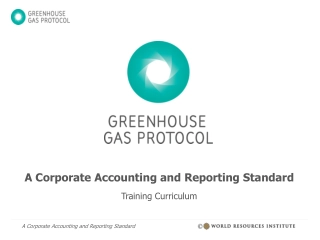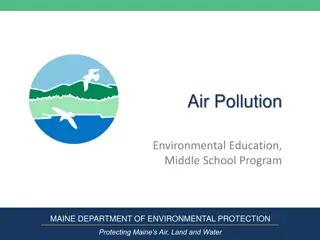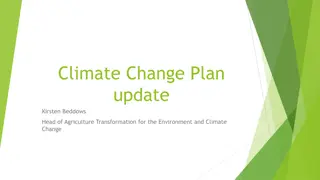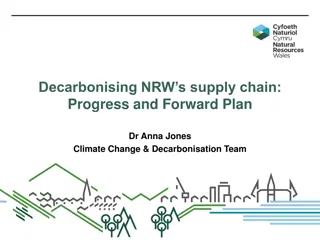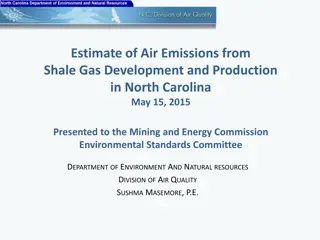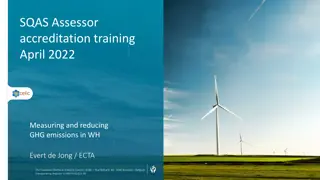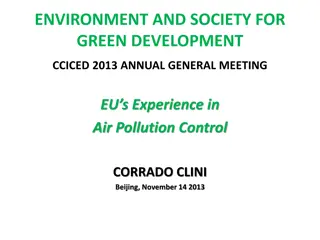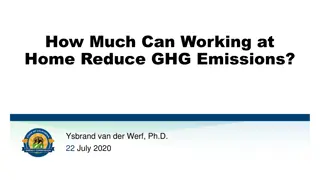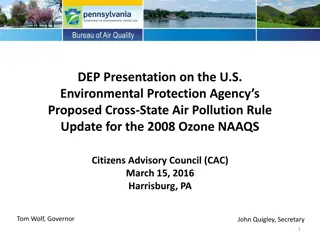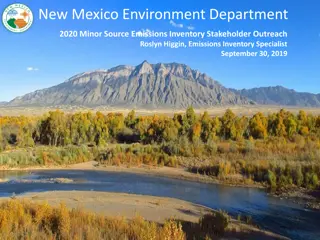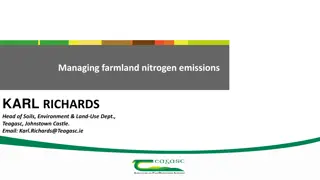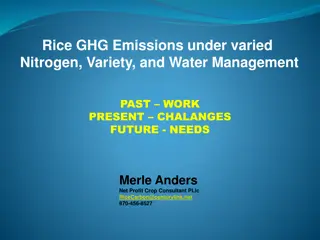Technical options for reducing Emissions from Air Travel
Technology has improved since the 1950s, but emissions from air travel continue to rise due to increasing demand. To combat this, various options are being explored, including improving fuel efficiency with new technologies, developing new engine and aircraft designs, and switching to low-carbon fuels. New advancements such as next-generation jet engines offering fuel savings and the development of electric planes for short flights show promise. However, challenges like limited global supply of alternative fuels and high costs of synthetic fuels need to be addressed to achieve significant emission reductions in the aviation industry.
Download Presentation

Please find below an Image/Link to download the presentation.
The content on the website is provided AS IS for your information and personal use only. It may not be sold, licensed, or shared on other websites without obtaining consent from the author.If you encounter any issues during the download, it is possible that the publisher has removed the file from their server.
You are allowed to download the files provided on this website for personal or commercial use, subject to the condition that they are used lawfully. All files are the property of their respective owners.
The content on the website is provided AS IS for your information and personal use only. It may not be sold, licensed, or shared on other websites without obtaining consent from the author.
E N D
Presentation Transcript
Technical options for reducing emissions from air travel Owen Bellamy Committee on Climate Change
Hard to reduce emissions from air travel No obvious technical options for zero emissions Uses a lot of energy and has strict safety standards Long life-time of planes (20-30 years) and long development times Few companies operating in global market
Technology has improved significantly since the 1950s Since the start of the jet age aircraft fuel efficiency has improved by around 75% Through advances in engine and aircraft designs But limits to existing technologies Demand has grown faster than fuel efficiency has improved, so emissions have increased
Options to reduce emissions Improve fuel efficiency with new technologies Engines Aircraft design Switch to low-carbon fuels
New engine designs Next generation of jet engine could offer ~30% fuel saving (from 2030s) Electric planes are being developed and could mean zero-emission flying But only for short flights and unlikely to be significant before 2050 Airbus E-Fan X
New aircraft designs New materials (~10% fuel saving, already starting to be used) New wing designs (up to ~30% fuel saving but airport design challenges) Re-design for lower speeds (~20% fuel saving but implications for scheduling)
Alternative fuels Biofuels Currently safety certified up to 50% use, but less than 0.1% of total aviation fuel consumption Limited global supply and potential for larger emission savings in other sectors, so do not plan for high levels (e.g. 10%) Synthetic fuels Possible to make carbon-neutral fuels by combining hydrogen and carbon, but likely to be very expensive
Costs Synthetic fuels Technologies Biofuels Costs more than fossil fuels No extra cost or could save money Likely to be very expensive


